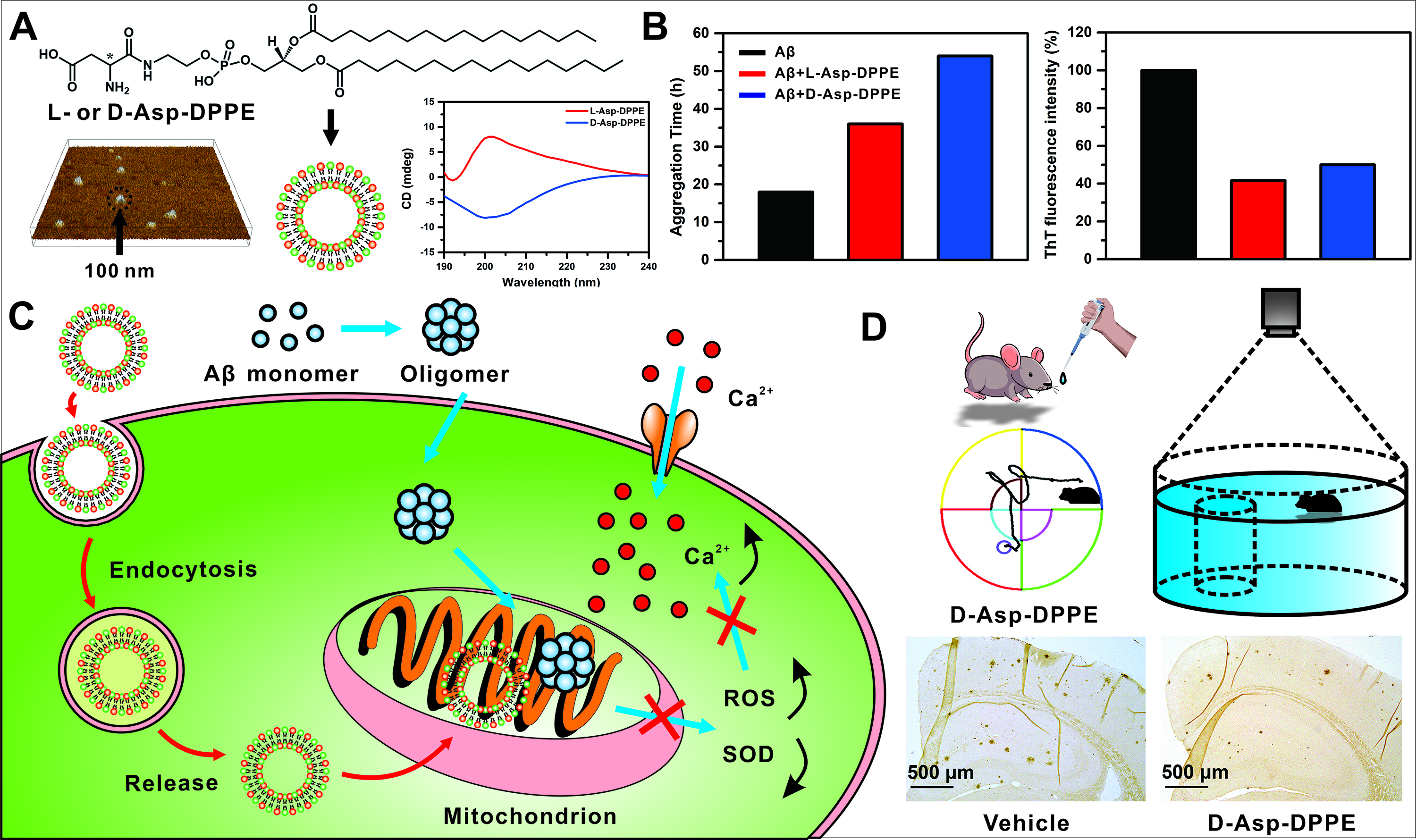Aspartic Acid-Modified Phospholipids Regulate Cell Response and Rescue Memory Deficits in APP/PS1 Transgenic Mice
Time:2023-04-26 19:10 Author:Xue Wang
Xue Wang, Huiling Gao, Xiaoyu Zhang, Shengxu Qian, Cunli Wang, Lijing Deng, Manli Zhong, and Guangyan Qing*
ACS Chem. Neurosci 2022, 13, 2154
Misfolding and accumulation of amyloid-β (Aβ) to form senile plaques are the main neuropathological signatures of Alzheimer’s disease (AD). Decreasing Aβ production, inhibiting Aβ aggregation, and clearing Aβ plaques are thus considered an important strategy for AD treatment. However, numerous drugs cannot enter the AD clinical trials due to unsatisfactory biocompatibility, poor blood−brain barrier penetration, little biomarker impact, and/or low therapeutic indicators. Here, a pair of chiral aspartic acid-modified 1,2-dipalmitoyl-sn-glycero-3-phosphoethanolamine (L- and D-Asp-DPPE) are prepared to build stabilized chiral liposomes. We find that both L- and D-liposomes are able to rescue Aβ aggregation-induced apoptosis, oxidative stress, and calcium homeostasis, in which the effect of D-liposomes is more obvious than that of Lones. Furthermore, in AD model mice (APPswe/PS1d9 double-transgenic mice), chiral liposomes not only show biosafety but also strongly improve cognitive deficits and reduce Aβ deposition in the brain. Our results suggest that chiral liposomes, particularly, Dliposomes, could be a potential therapeutic approach for AD treatment. This study opens new horizons by showing that liposomes will be used for drug development in addition to delivery and targeting functions.
